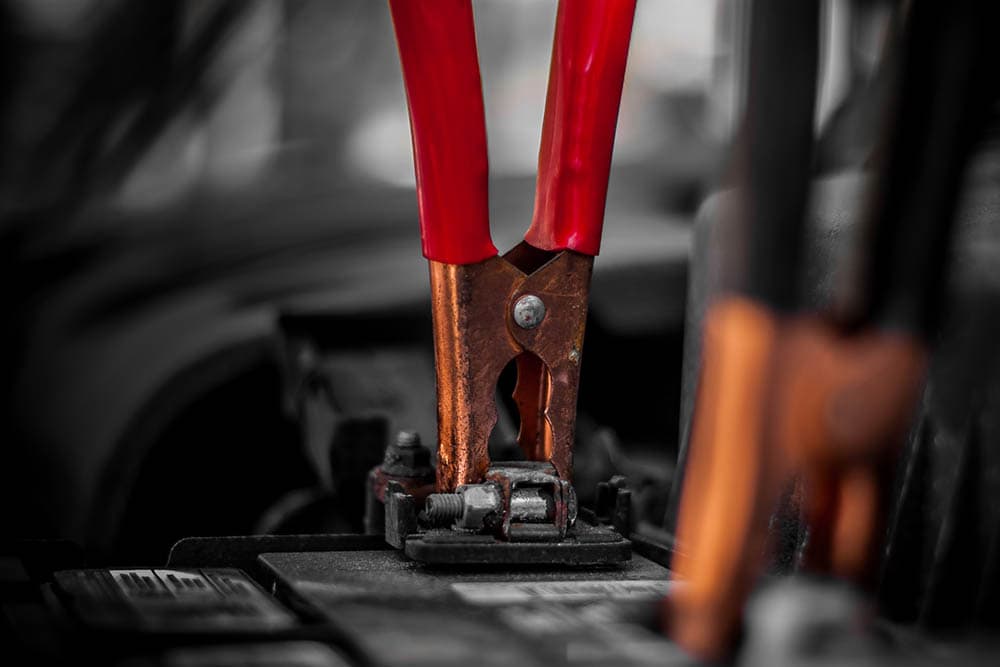How Long Can a Car Sit Without Being Driven?
-

- Last updated:

If you’re not able to use your car for quite a while, you may be wondering how long it can sit safely without being driven.
No car should sit in a garage or anywhere for more than a month without being driven. And even in that short time period, it’s supposed to be ignited and driven around for at least 30 minutes, a couple of times per week or so.
Read on below to find out more.
What kind of issues could develop if a car is left undriven for too long?
Before we get to the issues, we have to clarify something:
When talking about the time it takes for a car to be damaged while it sits in a garage or driveway, don’t assume that that’s the exact time period. It’s nothing more than a rough estimate, based on different factors. It could be less than a month or more than a month, depending on the condition of the vehicle, temperature, how well you prepared it, whether or not you’re living in a salt belt state, etc.
In any case, the following are some of the long-term storage problems that you’ll have to deal with:
Pest Infestation
We’re specifically talking about rats. Rats are warm-blooded animals and their bodies have been designed to generate their own heat, which is a good thing, except for the fact that they lose a lot of that heat to the environment. To combat this issue, they usually rely on behavioral thermoregulation. A process whereby they change their behavior and build nests to reduce the amount of heat lost to the surrounding.
It’s during that whole process that you’ll find them searching for warm places to build homes. And a stationary car does sound like a good option. They wait until nightfall to move in, and once they do, they’ll wreak havoc. You’ll find all your wires have been chewed, the insulation is no more, and your seats torn to pieces.
Belts and hoses aging

The aging of rubber is a natural process, mainly due to oxidation and heat, in addition to several other factors such as exposure to reactive gasses and stress. When the car is parked, your hoses and belts might not be exposed to heat, but they will certainly feel the impact of oxidation. There’s no way you can avoid this since oxygen is everywhere in the air around us. Signs of damaged hoses and belts include color fading, cracking, and embrittlement. Even if the vehicle wasn’t in storage, you’re advised to change these components after every three years.
Tire deterioration

According to experts, the worst decision that a driver can make is to drive around on tires that have sat in a garage for an extended period of time. Such tires will likely develop one of two things: flat spotting or tire bubbles.
Flat spotting
Tires have their own memories. The section that touches the ground will get used to being in that same position, and become rigid, and ultimately this will damage its functionality. Some flat spots are visible while others are not. So if you don’t want to drive around with a harmonic vibration or a shimmy, you should replace them all.
Tire bubbles
Idle vehicle tires normally develop bubbles, especially in those sections that have worn thin. But don’t even try to look for them because, just like flat-spot, they aren’t visible. It’s safe to say, you shouldn’t be driving if you suspect your tires have bubbles in them.
What you ought to do is to dial a mechanic and buy a new set of tires. That kind of damage cannot be repaired, and ignoring them is not an option, as those tires can blow out anytime.
Rust

This will depend on a number of factors. First off, there has to be water. That water will react with the metal in the presence of oxygen to form iron oxide. A reddish-brown chemical compound commonly referred to as rust.
Remember when we mentioned salt belt states? These are states that use road salt to control precipitation during winter. Because their roads are impassable during that time of the year, they always rely on those salts to melt the ice faster. Sadly though, that same salt is the number one cause of corrosion in automobile parts. So if it was already on the car when you parked it, it will accelerate the process. Your braking system will be damaged as well as the vehicle’s exterior.
Battery Failure

Ideally, a car’s battery should serve you for four to five years. The whole system has been designed in such a way that the alternator charges it from time to time. Any amount of power you use while driving will be replenished at the end of the day. But if it’s just sitting there, doing nothing, the alternator won’t be working. Meaning, you’ll have a dead battery in your hands in a couple of weeks.
Degrading fuel
Gasoline does go bad when exposed to oxygen for a lengthy period. That’s why companies always make sure to store it in an airtight container. They know it only takes 30 to 150 days for the liquid to start degrading and completely lose its engine-igniting abilities. All you’ll find after that period elapses are gummy deposits and varnish.
Final Words
We’ve heard people say that igniting the car regularly will protect it from damage. Well, we’re here to tell you that that’s a myth. Even if you drive it around the block, it will still be damaged the same way it would have been had you left it in the same position. The key is to ensure it reaches its full operating temperature on a regular basis.
Featured Image Credit: Toby_Parsons, Pixabay
Contents


